
With Fitbit releasing their new generation of fitness trackers and smartwatches this month, I have spent lots of time testing and putting together a review for the now very colorful Inspire 3 and the stress tracking Sense 2. Now, finally, it’s time to discuss the new Fitbit Versa 4.
Table of contents
Fitbit Versa 4 video review
Fitbit Versa 4: The Good
The button
Similar to the new Fitbit Sense 2, the Versa 4 features a new and improved button. This time around, it’s an actual button that’s been raised, making it easier to use. The button can be used to turn on the screen, take you to a list of your favorite apps, or to a customized feature you assign in the settings. Personally, I usually have had it set to the Alexa integration, but it can be set to other functions like the alarm clock, exercise selection screen, or Fitbit pay.
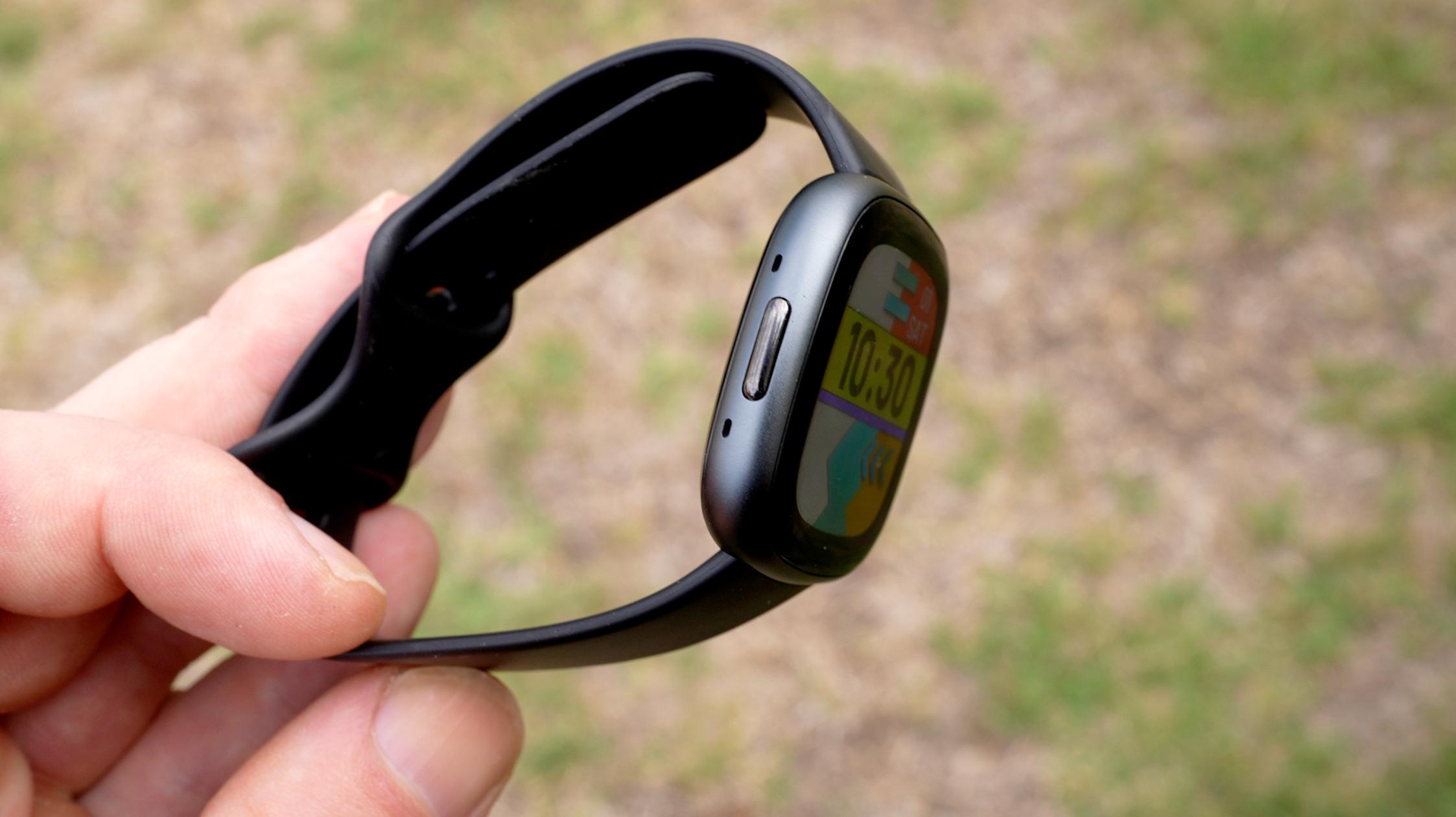
User interface
Also good here is Fitbit’s further simplified user interface. This is where Fitbit always excels. You have an easy-to-use, simple interface that anyone can understand and jump right into using. It’s a promising sign to see further improvement in an already great area.
Users swipe up to adjust settings, swipe down to see notifications, and swipe left or right to cycle through various tiles, like weather, exercise selection, your primary goal (set up via the app), sleep score, and more. Something I really appreciate here is the new heart rate tile, showing you the past few hours of your heart rate history.
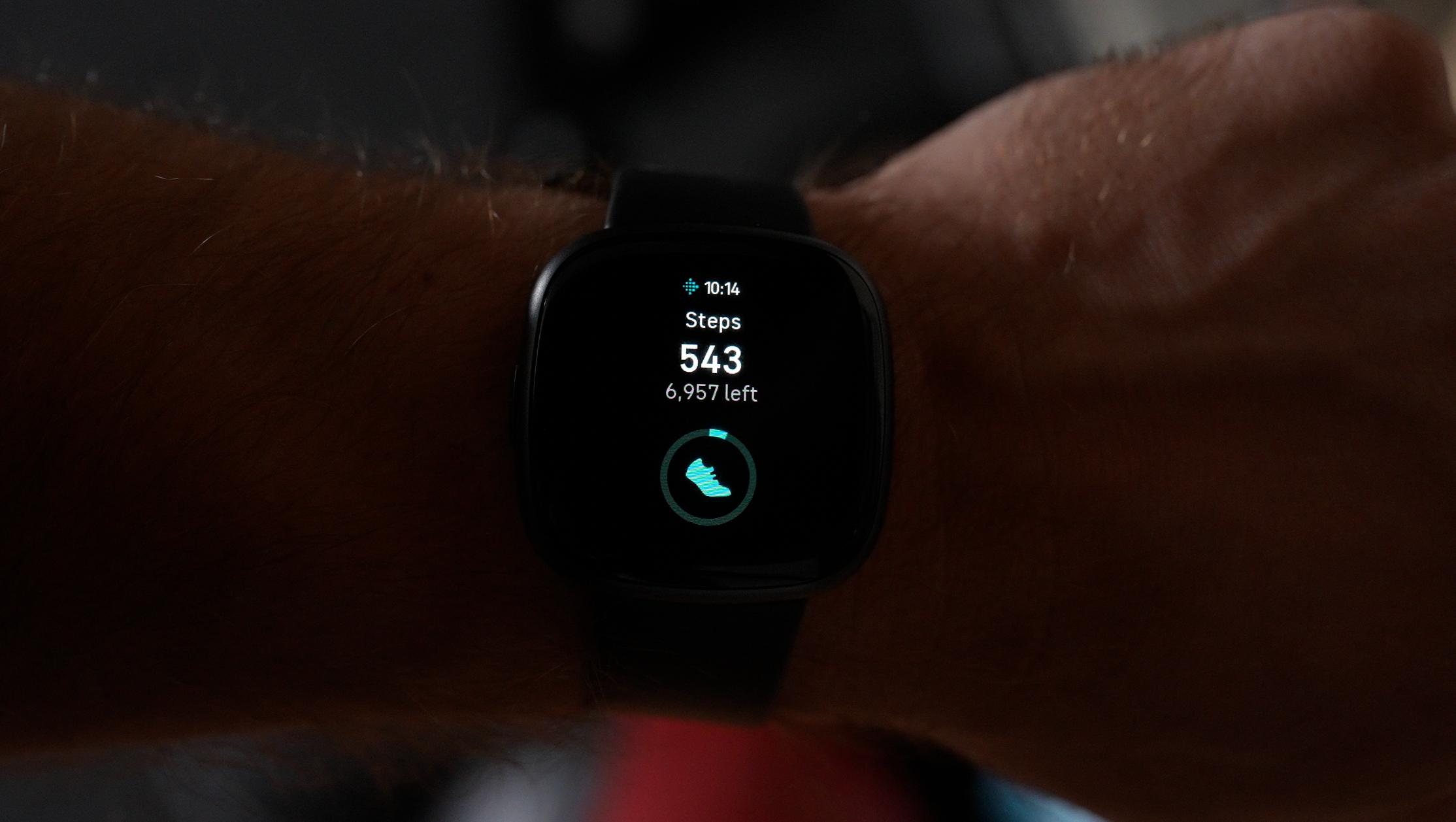
Screen
Everything the Fitbit Versa 4 does looks great on the bright AMOLED touch screen. With hundreds of available watch faces, pretty much anyone should be able to find something they’ll really like.
The Versa 4 is also much lighter now, at just 24g. This makes it 15% lighter than the Versa 3, and it’s also about 10% thinner. It’s this much smaller despite having the same sized display and battery life.
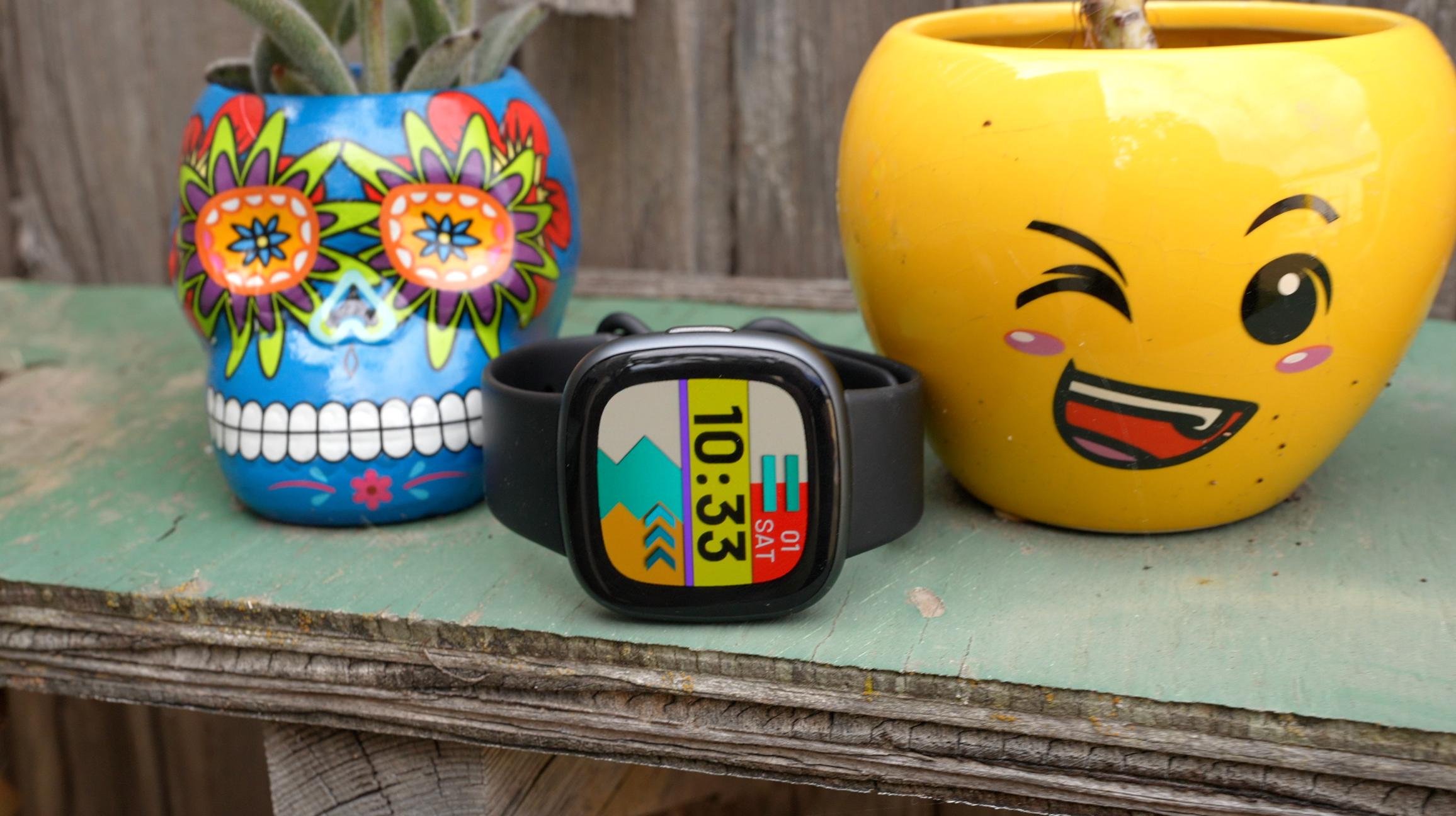
Battery life
The Fitbit Versa 4 battery life will generally last you five to six days, but with the always-on display enabled, that drops down to around two to three days.
Honestly, it will be a battery life of closer to two days if you tend to workout outside and utilize GPS tracking. Since I do and I turn up the brightness to the max while outside to make screen viewing easier, the battery has lasted around two days for me. I consider this to be decent.
The battery is fairly quick to charge, taking around 12 minutes to get a full day’s worth of battery life if you are not using the always-on display.
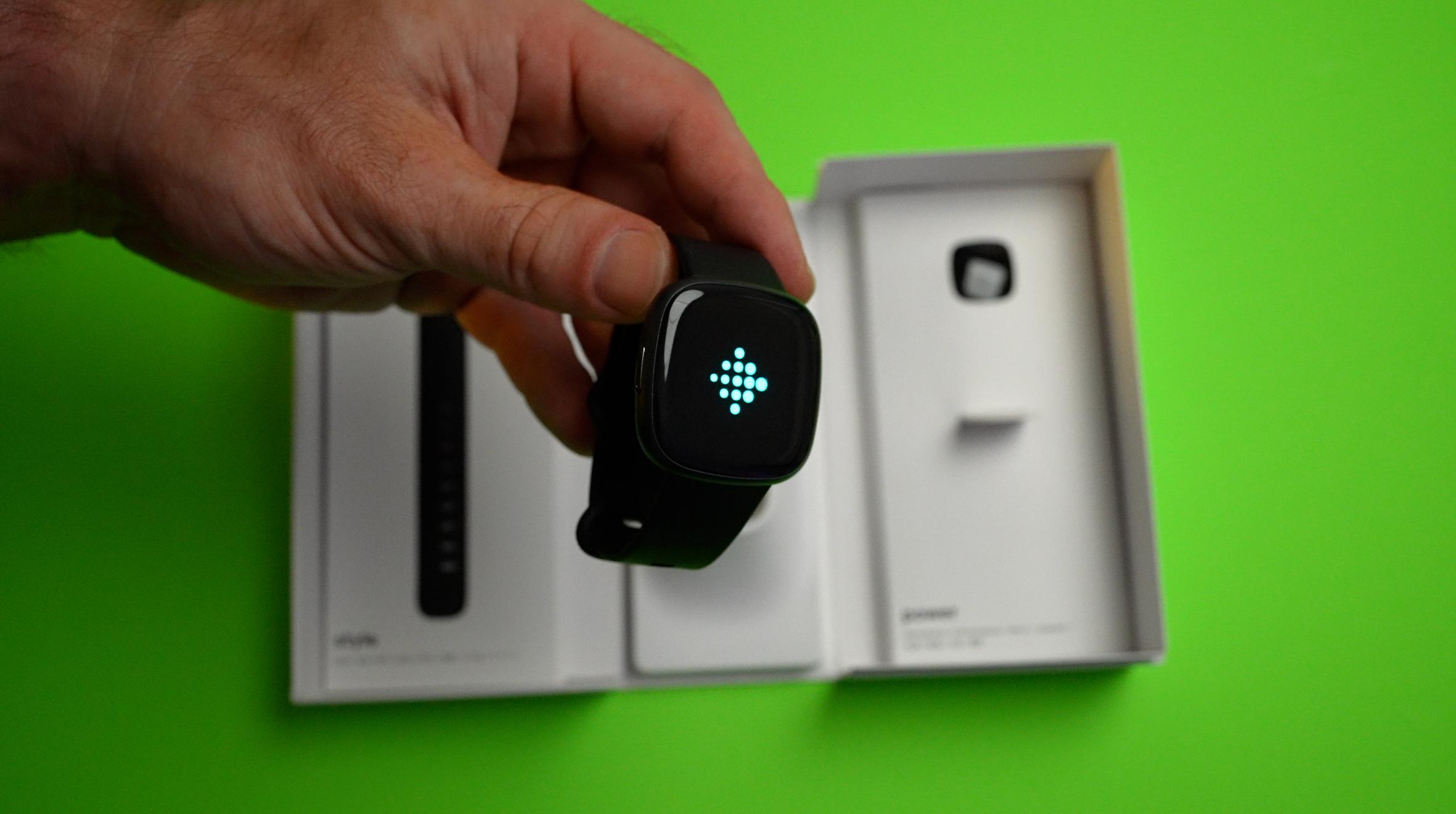
Workouts
For workout tracking, Fitbit has 41 workout options to choose from. This is twice as many as their lower-priced fitness trackers.
The workout screen is very simple, primarily showing you one main metric at a time. Which metric you see can be adjusted with a press. This isn’t going to be great for someone who likes to see a wider range of running metrics at once, but again, Fitbits are more for someone who wants something simple and easy to follow.
GPS accuracy
Similar to Fitbit’s Sense 2 and Charge 5, the Versa 4 has its own integrated GPS. This means you don’t have to run with your phone if you don’t want to.
In terms of GPS accuracy, I have found the Fitbit Versa 4 to be quite good for its price. The GPS tracking stays on target well. I experienced very few instances of it being thrown off, which is excellent for a fitness tracker at the price of $229.
The Fitbit Versa 4 is rated water-resistant for 50m of depth, as was the model before it. This is enough water resistance for swims and in the shower.
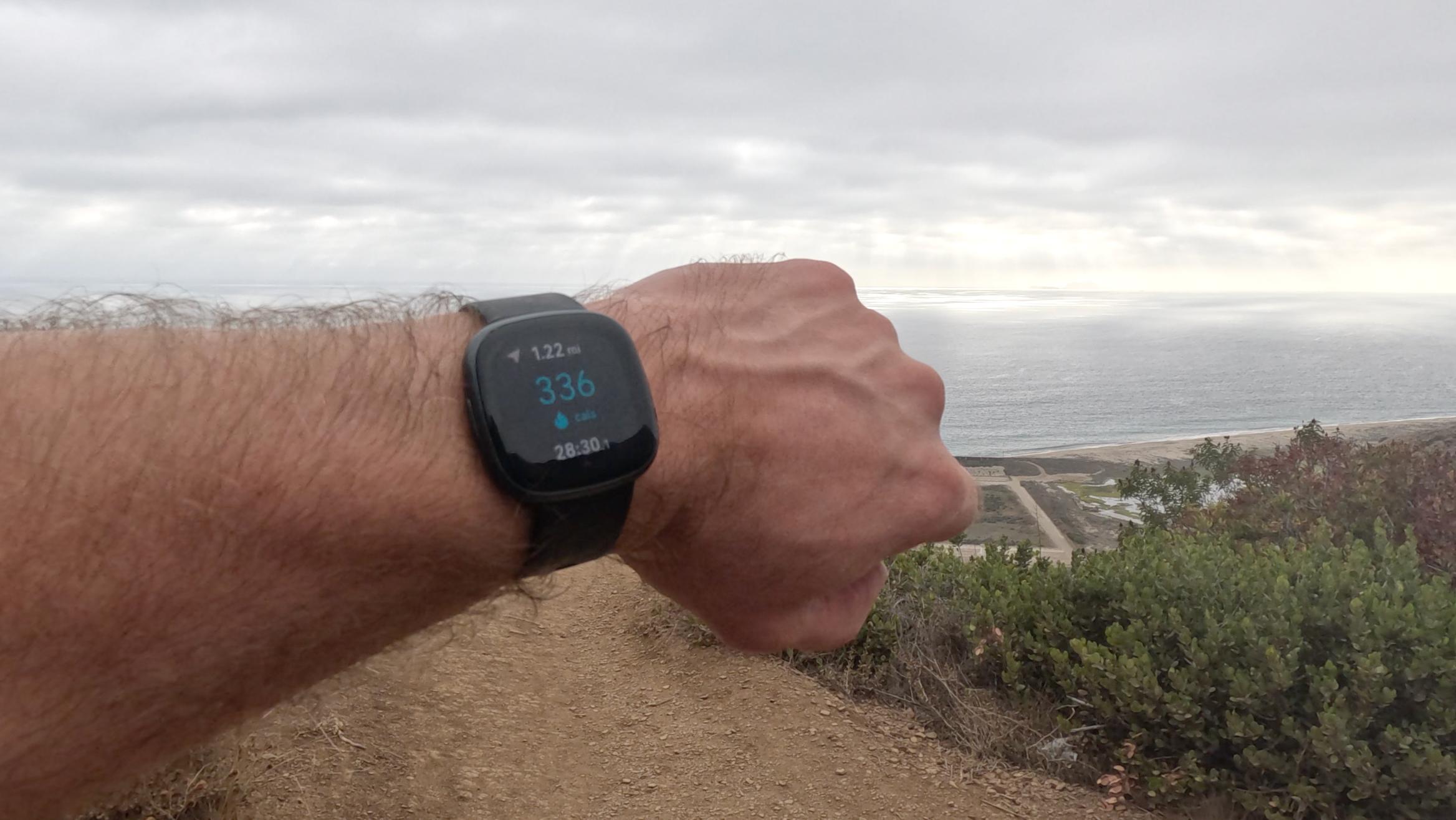
Sleep and health metrics
While you sleep, the Fitbit Versa 4 will track a variety of health metrics, including breathing rate, HRV (heart rate variability), skin temperature variation, oxygen saturation, and resting heart rate. On top of those metrics, it tracks your sleep and breaks it down into the amount of time you spend in various sleep phases.
Fitbit uses your health metrics to give you a readiness score to help you better determine how prepared your body is to take on additional training or exertion. This is really what I like the most about the Fitbit Versa 4, as all of these metrics seem pretty solid.
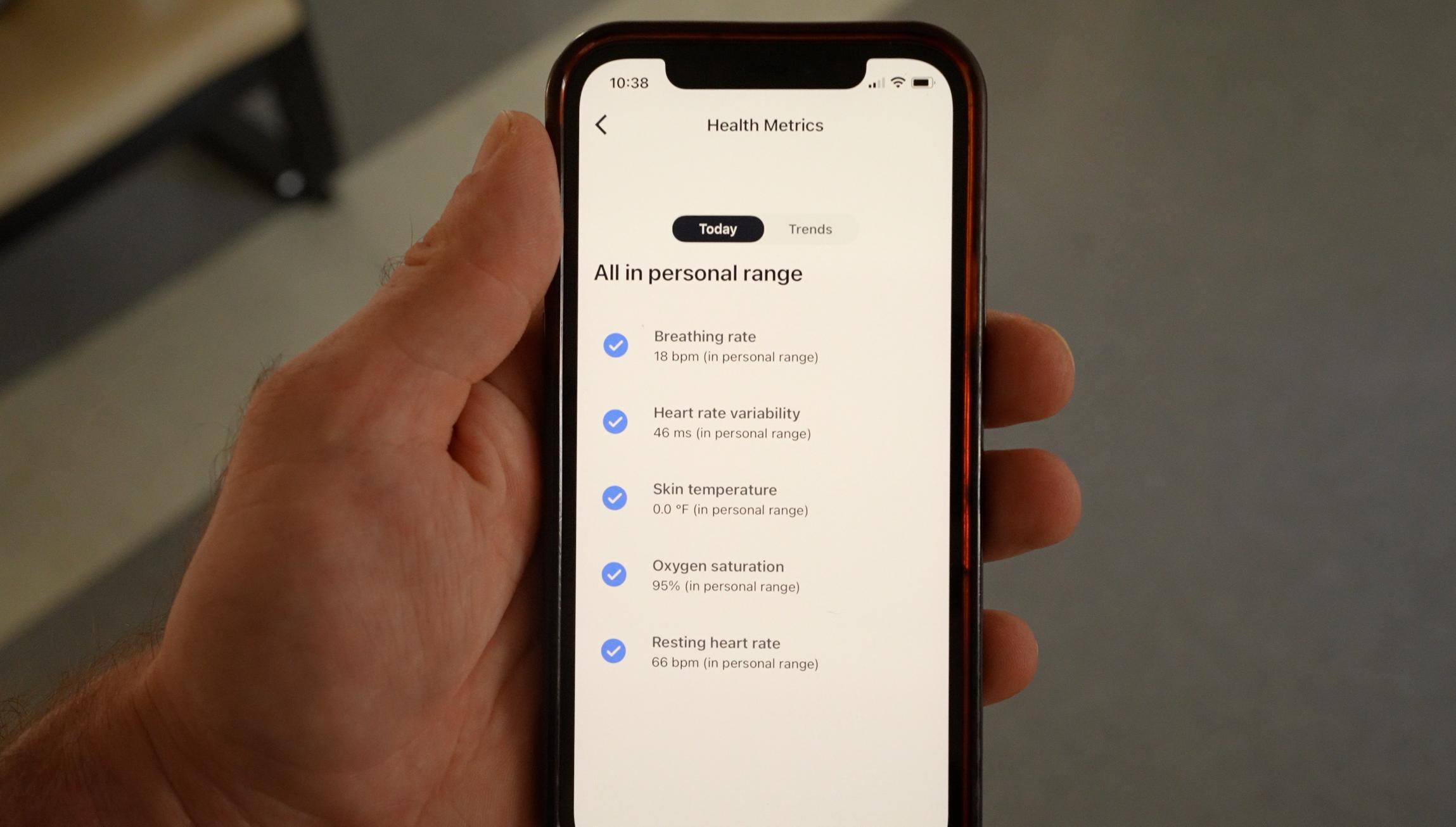
I’ve actually found the sleep tracking for Fitbit’s Versa 4 and Sense 2 to be some of the most accurate wearables. They even correctly tracked a nap I took, which is usually missed by others.
Even though I think the actual tracking is good, I’m a bit more hesitant about trusting the scores Fitbit assigns them. For me, at least, they have seemed a little too optimistic.
For example, when putting together the review for the FitbitSense 2, I was up pretty late and didn’t get much sleep. Fitbit gave me a score of 71 out of 100… and a readiness score of 68, which it says is excellent. I felt beat up and far from excellent.
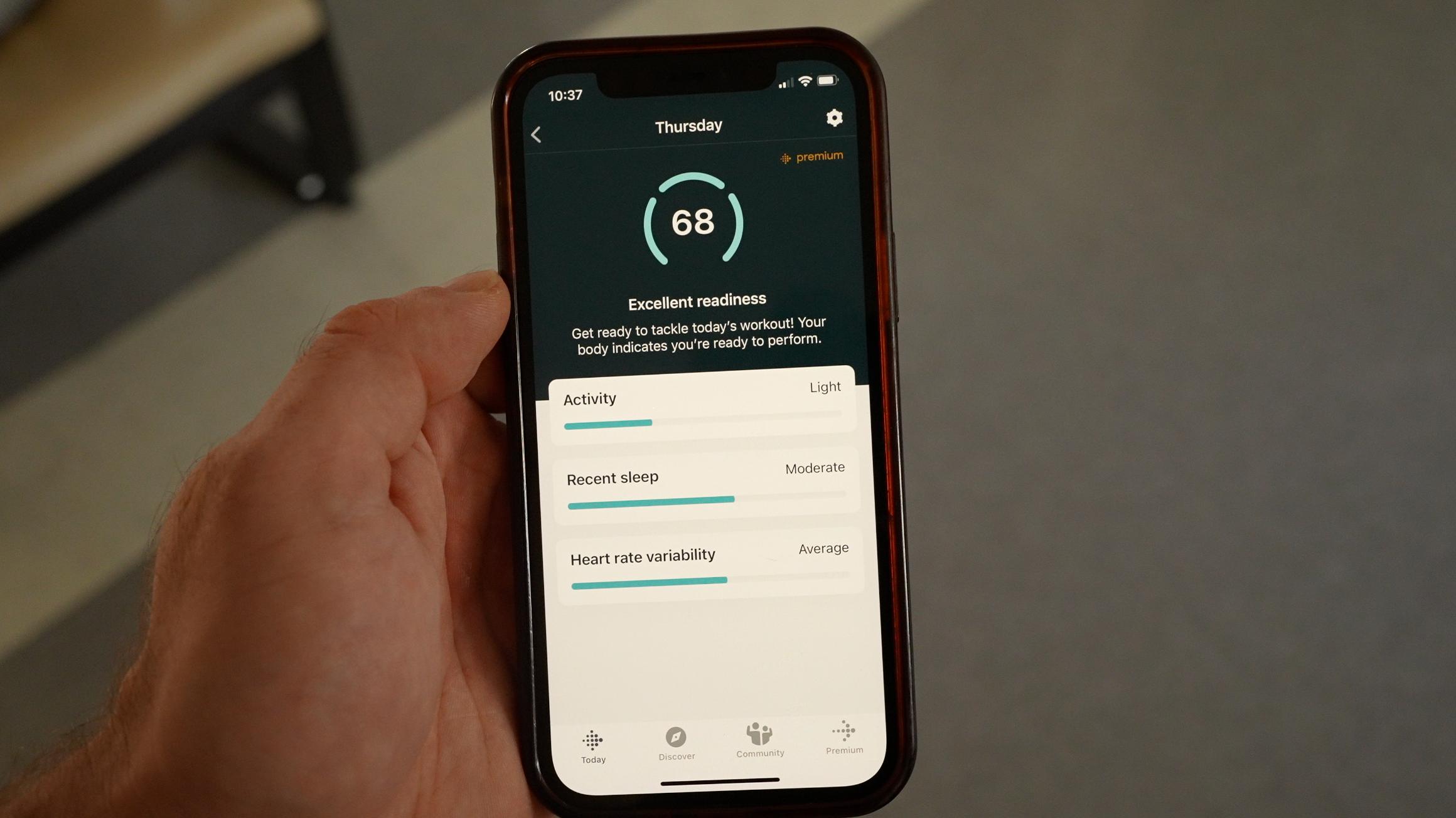
Bluetooth and sync range
Fitbit Versa 4 has improved Bluetooth and sync range. This allows for a better connection to your phone and a much wider sync range, extended from 9 feet to now 30 feet.
Currently, you can use the Fitbit Versa 4 to get notifications from your phone, and there’s a find-my-phone app (which I use all of the time). In the near future, there should be call support to take calls directly on the Versa 4 itself, or hang up or ignore phone calls, as well.
Google Wallet and Google Maps
Fitbit says Google Wallet and Google Map integration will be available soon on the Fitbit Versa 4. Since these are not currently out, I was unable to test them, and there is not yet a specific release date. In the meantime, you can use the FitBit Pay app as a wallet until then.
Watch band
I’d be remiss not to mention the included watch bands. The Fitbit Versa 4 comes with both small and large sizes included, and the bands are easily removed and swapped with a different band.
I found the included watch band to be very comfortable. Previous Versa 3 or Sense bands will work on the Fitbit Versa 4, as basically any 24mm Fitbit band can be used.
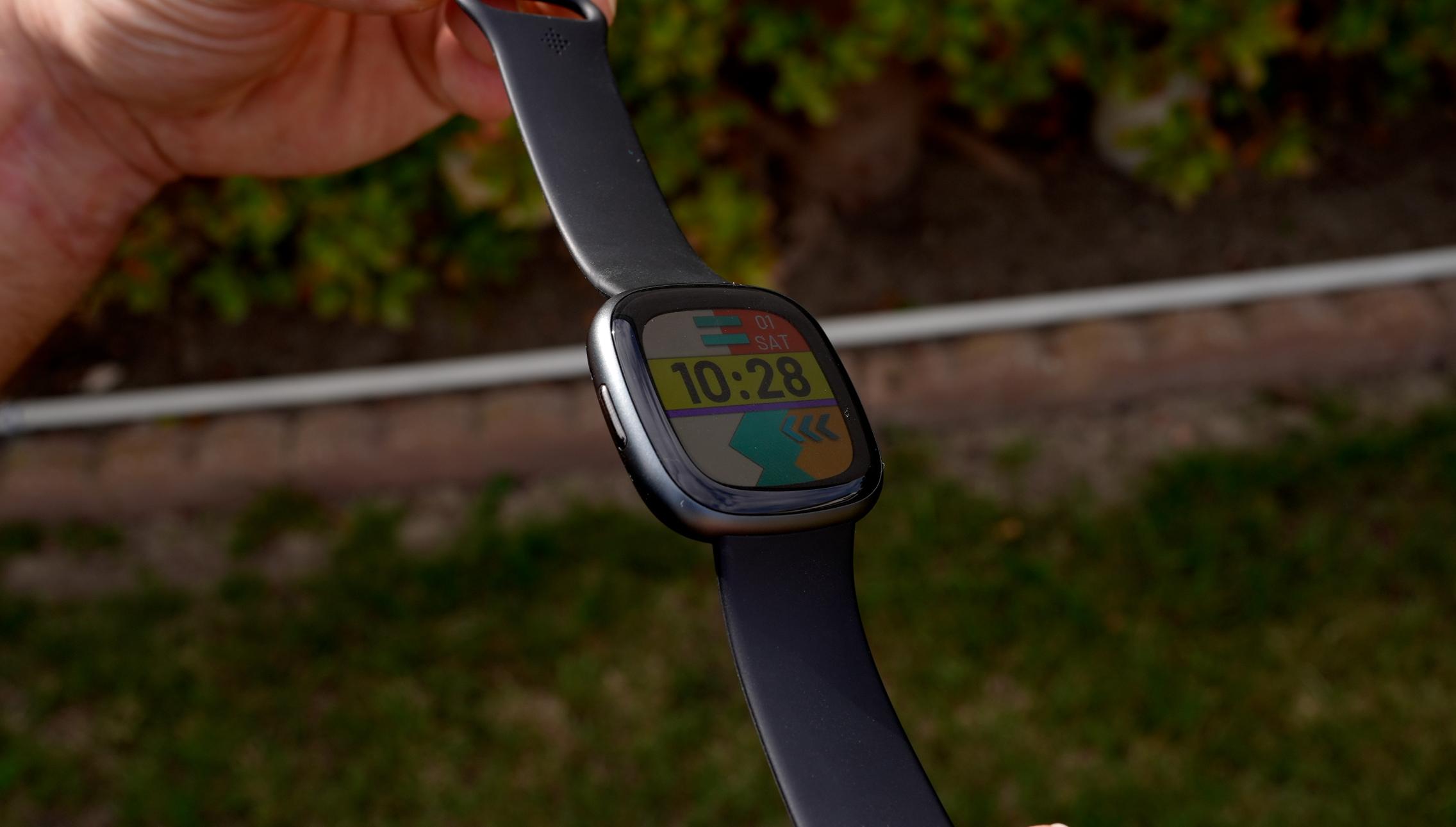
Fitbit Versa 4: The Bad
Heart rate accuracy
While I found the accuracy of the GPS and sleep tracking to be pretty solid, I had less luck with the heart-rate tracking during exercise.
At rest, or when not doing a tough workout, my heart rate seems to track pretty well, but once I start something at higher intensity, I found the Fitbit Versa 4 to have a bit of lag. It would often take a minute, or longer, to catch up, and sometimes never quite be able to adjust to where my heart rate was.
Again, it’s not bad for lower-effort, continuous work, but for interval training or harder workouts, the heart rate tracking seems pretty far from reliable.
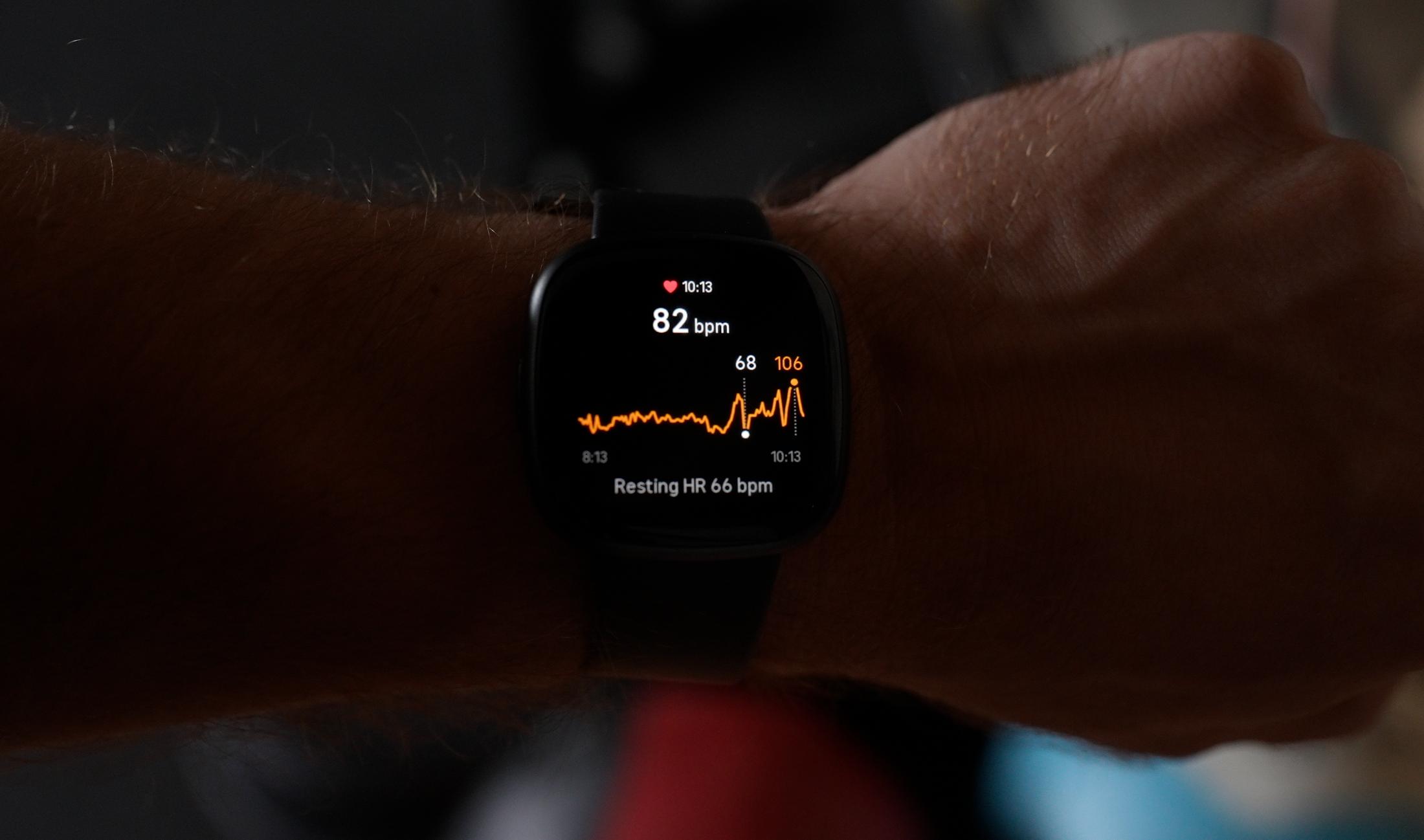
Fitbit Premium features
Many features – like the Daily Readiness Score, Sleep Profile, and analytics, as well as wellness reports, games and challenges, and video workouts – are locked behind the Fitbit Premium Membership.
You do get six months of free membership with the purchase of the Fitbit Versa 4, but it costs around $10 per month to continue after that.
Fitbit Versa 4: The Ugly
Features removed
There are some significant downgrades to the Fitbit Versa 4 over the Versa 3, with many features having now been removed. I was bummed to see the removal of snore and noise detection. But the removal of Google Voice instead of Alexa is just straight-up bewildering.
Missing third-party apps and music support
The complete removal of third-party apps and music support is where things get truly ugly.
Removing third-party app support eliminates the ability to add any additional functionality that may be missing. This is especially bad when we consider the removal of apps like Spotify, which would allow you to play and even download music onto the Fitbit Versa 4.
Unable to download content onto the watch requires you to bring your phone along for outdoor workouts if you wish to stream audio. This makes the integrated GPS less impressive because you’ll probably, in most cases, need to bring your phone with you on a walk or run anyway.
In my opinion, no third-party app support makes it hard to call Fitbit’s Versa 4 and Sense 2 “smartwatches.” These feel more like premium fitness and health trackers now, with not a lot different here on the Fitbit Versa 4 than the $99 Fitbit Inspire 3.

Cost
Fitbit Versa 4 is definitely a nice fitness tracker, but at a cost that is close to that of an actual smartwatch, it feels a little misplaced.
If you want a very simple, easy-to-use, well-designed fitness tracker, you could go for the much cheaper Fitbit Inspire 3 or even the Fitbit Charge 5. If you want a lot of the functionality that comes with a smartwatch, you’ll probably get an Apple Watch SE or the upcoming Google Pixel watch.
Fitbit Versa 4 seems only for someone who wants that really nice, simple fitness tracker and is willing to pay a lot more for the best-looking version of that.
Likely that was Fitbit’s point: to further separate what simple devices Fitbit makes from the upcoming Pixel watch, which will use a lot of the Fitbit fitness and health functionality alongside being a full-on smartwatch.
Most people should probably wait for the Pixel Watch. Or while you still can, get the Fitbit Versa 3, which still has all of the features that have now been removed.
Buy the Fitbit Versa 4 here.
Buy the Fitbit Versa 3 here.
FTC: We use income earning auto affiliate links. More.

Comments